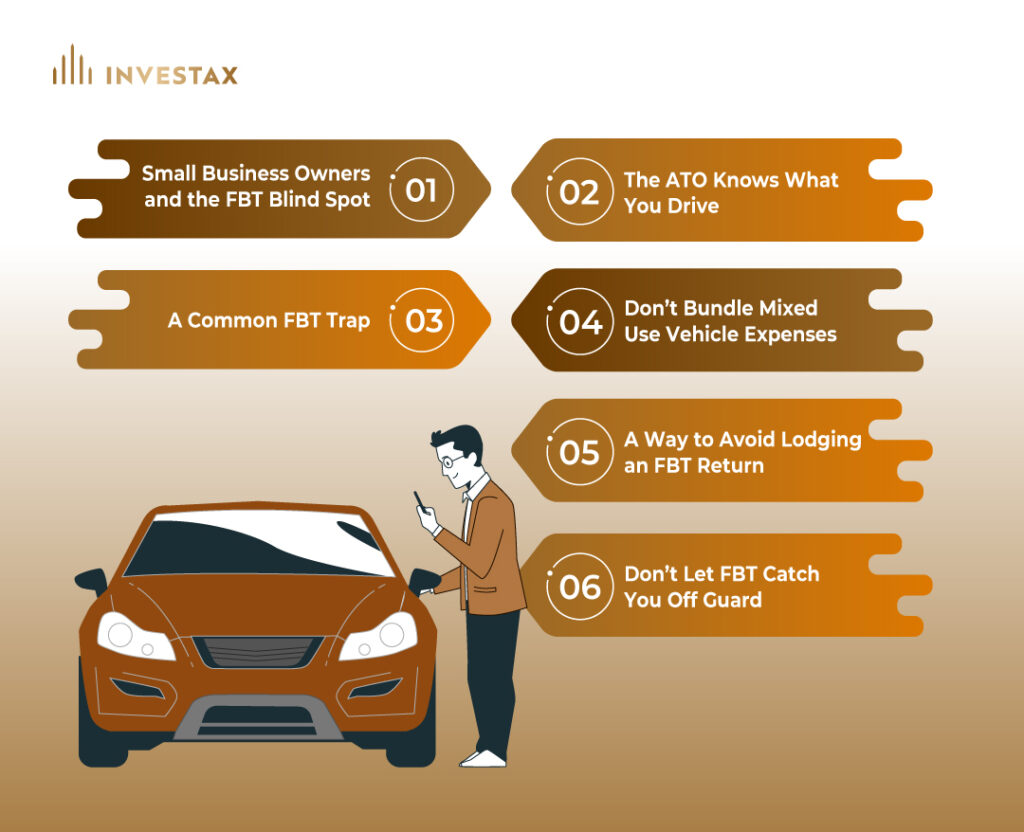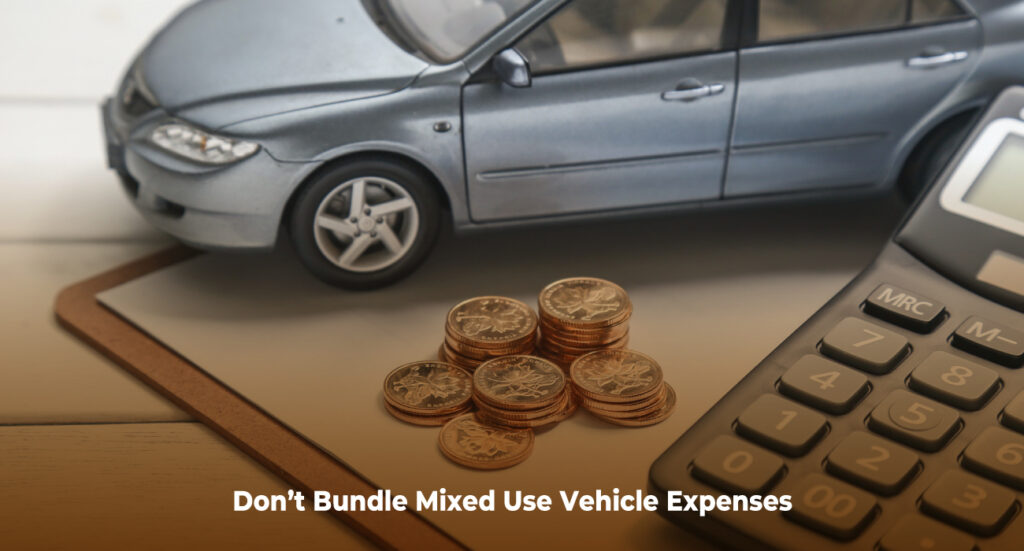Fringe Benefits Tax (FBT) Reporting in 2025: Is Your Car Really 100% Used for Business?
Fringe Benefits Tax (FBT) year, which ended on 31 March. With FBT returns due by mid-May, many are reflecting on whether they’re even in scope. The common sentiment? “FBT is only for large corporations.” Unfortunately, that couldn’t be further from the truth.
The Australian Taxation Office (ATO) has ramped up its compliance activities, backed by renewed government funding to expand its data-matching capabilities. This means the ATO now has sharper tools than ever to identify mismatches between reported income, vehicle usage, staff benefits, and actual business activity. No business—small, medium, or large—is truly off the radar.

Small Business Owners and the FBT Blind Spot
Fringe Benefits Tax applies when an employer provides non-cash benefits to employees, such as the use of a company car, payment of private expenses, or entertainment perks. While large corporations are well aware of their FBT obligations due to scale and audits, many small business owners either aren’t informed—or worse—assume they’re too small to matter.
What we’re seeing more often in our advisory conversations is a worrying trend: small business owners who genuinely misunderstand or unintentionally misreport their FBT obligations. The most common culprit? Motor vehicles.

The ATO Knows What You Drive
With advanced data-matching tools and increased funding, the ATO no longer relies solely on self-reporting. It can now easily identify vehicles registered to businesses and cross-reference that information with your income tax returns, FBT lodgements, and employee declarations. If your business has purchased a high-end or luxury vehicle—think Mercedes, BMW, Tesla, or similar—the ATO will know. Maybe not today, but certainly tomorrow.
If you’re still under the impression that simply registering the car under your company or trust name makes it 100% tax deductible, we strongly suggest you think twice. The ATO is increasingly challenging claims of full business use—especially for vehicles that are clearly capable of, or likely used for, personal purposes.
Even if you’re not registered for FBT, the ATO expects you to perform the calculation, determine the taxable value of any fringe benefit provided, and either lodge an FBT return or ensure the employee (or director) has reimbursed the private use portion back to the business. Failing to do either can expose your business to backdated FBT liabilities, penalties, and interest. In short, if you’re not keeping records, you’re not off the hook—you’re in the firing line.
A Common FBT Trap
The most dangerous sentiment we’ve come across over the years is the belief that simply buying a vehicle under a company or trust name automatically makes it tax deductible—just because it’s registered as a business vehicle.
Business owners often purchase high-value sedans, luxury SUVs, or sports cars through their companies, under the assumption that they’re for “business use.” While it’s entirely possible for a car to be legitimately used for work purposes, the business usage percentage must be accurate—and substantiated.
These days, it’s rare to find a business vehicle that doesn’t have some element of personal use. From school drop-offs to grocery runs or weekend getaways, the ATO understands how cars are used in real life—and so do their auditors. Trying to justify 100% business use for a car that’s being driven home every night or used on weekends is becoming increasingly difficult. Without a valid logbook and proper documentation, you’re unlikely to convince the ATO that personal use didn’t occur.
Many small businesses unintentionally over-claim their logbook percentages or don’t maintain any logbook at all, despite relying on them to justify full business use. Without this evidence, the ATO can (and does) default to statutory percentages, which often result in a higher FBT liability—or penalties for incorrect reporting.

Don’t Bundle Mixed Use Vehicle Expenses
Another common issue we see is small business owners bundling motor vehicle expenses together instead of tracking them separately. For example, suppose your business owns two vehicles: a Ute that is used exclusively by an employee for business purposes (100% business use), and a Mercedes GLA that you use personally and professionally, with around 50% business use.
While the Ute may be fully deductible and not trigger any FBT due to its genuine business application, the Mercedes is a different story. Even though both vehicles are owned by the business, the personal use component of the Mercedes makes it a reportable fringe benefit. This is where many business owners go wrong—they combine fuel, servicing, and other expenses into one account or don’t maintain separate logbooks and fuel receipts.
Failing to separate these expenses could mean your entire motor vehicle claim is questioned or the ATO assumes 100% private use for the Mercedes in the absence of proper records. The FBT liability is calculated based on personal use, and in this case, the 50% private use of the Mercedes GLA must be properly substantiated with a logbook and apportioned fuel costs.
Proper record-keeping isn’t just good practice—it’s protection. Ensuring each vehicle’s expenses are individually tracked is essential for accurate FBT reporting and to avoid penalties in the event of an audit.
Understanding FBT Reimbursements: A Way to Avoid Lodging an FBT Return
Many business owners are surprised to learn that you don’t always have to lodge an FBT return—but you do need to act if a fringe benefit has been provided. One commonly accepted approach is to calculate the taxable value of the benefit (such as private use of a company car) and have the employee or director reimburse the business for the private portion before the end of the FBT year (31 March). This reimbursement effectively cancels out the benefit, and in most cases, means no FBT is payable and no FBT return is required.
However, this is only effective if the reimbursement is made and documented. If you’re not reimbursing or lodging an FBT return, and you’re still providing benefits with private value, you’re at risk of non-compliance. The ATO increasingly expects small business owners to either lodge or reimburse correctly and retain records to prove it. FBT isn’t optional just because you’re small—it’s triggered by the benefit itself, not the size of your business.
Conclusion: Don’t Let FBT Catch You Off Guard
Fringe Benefits Tax is one of the most misunderstood areas of business tax & compliance. It’s also one of the easiest to overlook until it’s too late. Whether you’re driving a luxury car, providing perks to staff, or simply assuming you’re too small to be on the ATO’s radar, now is the time to review your FBT position. With data-matching technology and increased audit activity, the ATO is paying close attention.
If you’re unsure whether you’ve reported FBT correctly, or if you want to ensure your vehicle claims are substantiated and compliant, don’t leave it to chance. Speak to the business tax specialists at Investax. We can help you calculate FBT, set up proper records, and even explore reimbursement options to minimise your exposure.





